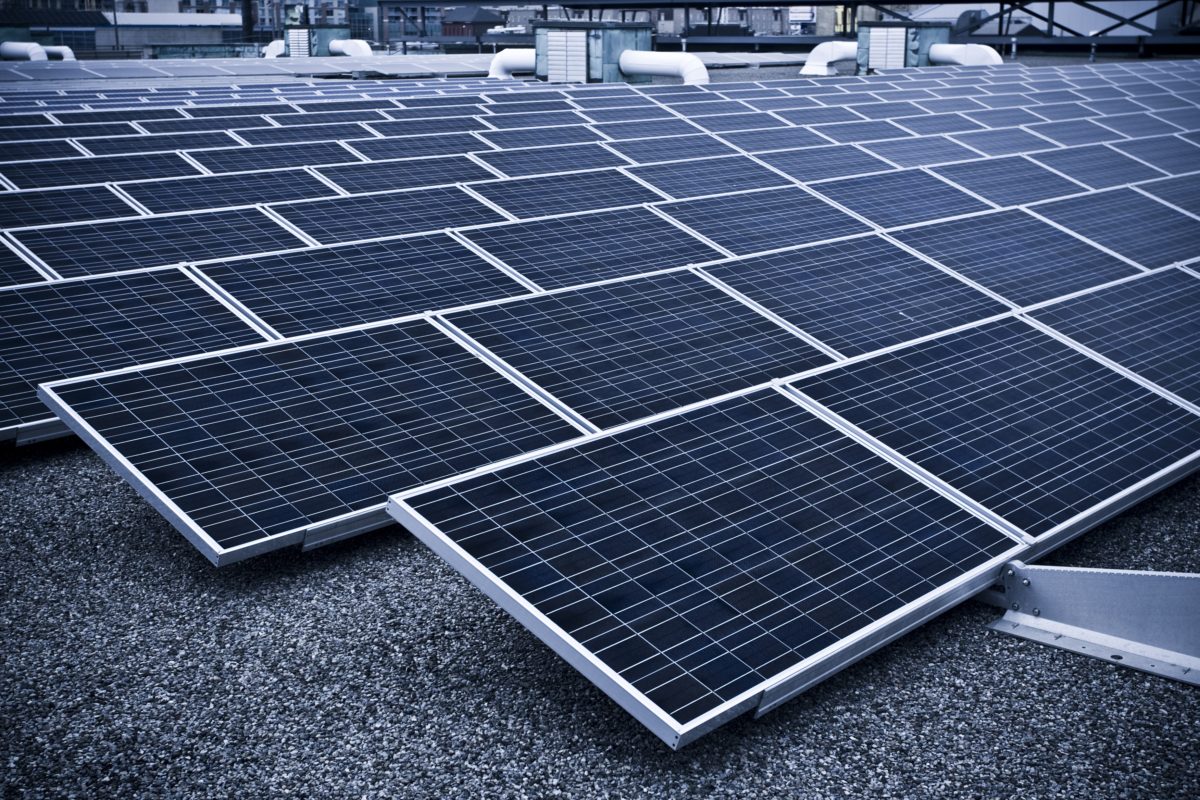To date, 24 states have enacted net-zero carbon and greenhouse gas (GHG) electricity production goals. Public policymakers look to carbon-neutral solar to help realize these goals, with full compliance expected between 2030 and 2050. To maintain and increase solar adoption nationwide, developers must consider how to best serve low-income communities in support of the net-zero agenda. These communities may lack the property assets and upfront resources required for self-owned residential solar and, therefore, present opportunities for solar growth as a largely untapped market.
Both housing developers and underserved communities alike can benefit greatly from increasing public funding opportunities for solar. As interest in projects that address environmental, social and governance (ESG) aspects of investment continues to grow, integrating renewable energy in affordable housing projects can provide significant sustainability benefits to developers, municipalities, and end users.

But what are the most important considerations for implementing solar as part of affordable housing development projects? Let’s take a look.
Solar systems, design & permitting
Ground mount, rooftop, or carport racking systems are among the options developers can consider for incorporating solar at affordable housing developments.
Ground mount systems require available physical space and special permit considerations, particularly when located on a “green field” or previously undisturbed site. In these instances, developers can alternatively use unutilized rooftop space on larger, multifamily buildings. HVAC equipment and piping pathways should be designed with room for solar in mind. Rooftop solar can reduce facility-cooling costs when combined with reflective roof coatings or bifacial modules to boost production.
For states with established community solar offtake policies, the case for offsite ground mount systems can be made. Selecting a brownfield site minimizes environmental impact concerns and presents opportunities for additional funding, such as with New York’s NYSERDA brownfield incentive, which can be further combined with the Inclusive Community Solar Adder.
Solar carports are another option, which can protect tenants from inclement weather while redirecting precipitation to improve ground conditions, nourish landscaping, minimize winter maintenance, and reduce urban heat islanding. These features can help make the case for green building fund eligibility, like the federal Enterprise Green Communities program, a compelling advantage in the face of high structural steel costs.
Additional design considerations include integrating complementary emerging technologies to highlight a facility’s holistic commitment to net-zero. The “all-electric” building approach can leverage technical improvements in electric heat pumps while preempting pending New York legislation to ban gas hook ups in new buildings, citing climate change concerns. It’s also a safer, lower-carbon operations strategy.
What’s more, some housing developers have begun adding electric vehicle (EV) charging stations to upcoming projects, increasing equitable access to renewable transportation modes. National Grid, an electric utility in New York, manages projects and community engagement for the EV Charging Station “Make Ready” program. This incentive is available for property owners and managers of multi-unit dwellings and can cover up to 100% of EV charger infrastructure costs, like distribution transformers, conduit, and conductors.
For residents without vehicles, proximity to clean transportation must also be taken into consideration. Many states are committing to the electrification of their public bus fleets while policymakers explore new transportation strategies for reducing GHG emissions and other localized pollution.
Public funding & incentives
A review of available funding programs and their eligibility requirements should occur in conjunction with early site selection planning to give developers the best chance at project realization. After all, financial feasibility is still the greatest driver of solar investment.
The complexity of connecting resources across multiple funding sources with unique administration requirements is a significant obstacle to market development. As such, many believe the key for market expansion is a greater collaboration between local, state, and federal incentive programs and more emphasis on non-economic solar benefits that are more difficult to quantify.
Greater technical assistance for funding applicants—particularly to publicize and connect ESG-focused resources—is needed. Unifying funding applications may also help developers reach investment decisions sooner, relieving pressure on clogged electrical interconnection queues.
Thankfully, we’re beginning to see a response to these needs. For example, New York-based Homes and Community Renewal and NYSERDA recently partnered to develop the Clean Energy Initiative, which offsets the costs of adding sustainable features to affordable housing projects, especially those already in existing state bond finance and federal low-income housing tax credit programs.
Community benefits
Low-income neighborhoods have historically been subject to unsightly and harmful infrastructure and manufacturing developments. As we transition away from fossil fuels, solar advocacy organizations like Solar Energy Industries Association (SEIA) work diligently to engage impacted neighbors when siting projects. SEIA also works to develop educational and workforce training opportunities alongside solar installations, reframing residents as active participants in the new energy economy.
Another important benefit of increasing renewable energy generation is the offset of negative health impacts from coal-fired power. The Multi-Pollutant Power Plant Strategy – introduced this year by the EPA – sets the stage for increasing recognition of the relationship between coal-fired power production and negative health outcomes. This consideration is expected to make siting new coal-fired power plants more difficult, thereby increasing the attractiveness of solar investment.
Utility bills are often an unpredictable portion of an affordable housing community’s operating budget. By stabilizing power pricing and simplifying the owner’s financial projections, solar delivers lower and more predictable energy pricing – especially on all-electric projects. This is an important benefit for price-sensitive tenants.
A final word
Solar deployment on affordable housing projects can be used to better distribute the benefits of renewable energy to all communities, especially historically underserved populations. When coupled with ambitious carbon reduction and renewable energy mandates, the case for solar on affordable housing is a powerful one.
***
Linden Speranza, PMP, works as LaBella’s Solar Construction Program Manager and Technical Service Coordinator. She completed a Bachelor of Science in Public Policy earning magna cum laude distinction at Rochester Institute of Technology in 2010. She went on to complete a Master of Science in Science, Technology and Public Policy in 2015, specializing in sustainability topics. She has 10 years experience as a project management professional and began her career working as a GIS planning assistant before managing green and healthy home construction projects for disadvantaged communities. She began working in the solar industry in 2014 and has since led over 100 residential and commercial solar projects through design and construction phases.
The views and opinions expressed in this article are the author’s own, and do not necessarily reflect those held by pv magazine.
This content is protected by copyright and may not be reused. If you want to cooperate with us and would like to reuse some of our content, please contact: editors@pv-magazine.com.








By submitting this form you agree to pv magazine using your data for the purposes of publishing your comment.
Your personal data will only be disclosed or otherwise transmitted to third parties for the purposes of spam filtering or if this is necessary for technical maintenance of the website. Any other transfer to third parties will not take place unless this is justified on the basis of applicable data protection regulations or if pv magazine is legally obliged to do so.
You may revoke this consent at any time with effect for the future, in which case your personal data will be deleted immediately. Otherwise, your data will be deleted if pv magazine has processed your request or the purpose of data storage is fulfilled.
Further information on data privacy can be found in our Data Protection Policy.